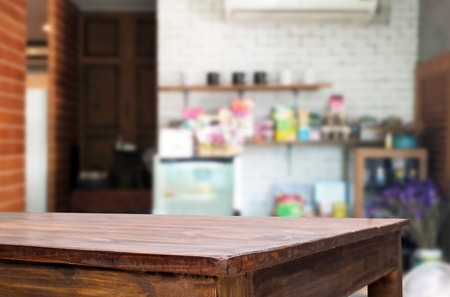Understanding Feng Shui Principles in Modern Homes
Feng Shui, an ancient Chinese practice, centers around creating balance and harmony within a space. The goal is to promote positive energy flow—what’s called “Chi”—so you feel more comfortable, productive, and at peace in your home. While Feng Shui originated thousands of years ago, its principles can be seamlessly adapted to fit the open-plan living spaces common in modern American homes.
What is Feng Shui?
At its core, Feng Shui is about arranging your environment to support well-being, happiness, and success. It uses elements like color, furniture placement, natural light, and even the direction your home faces to influence energy flow. Here are some basic concepts:
| Feng Shui Concept | Description | How it Applies to Open-Plan Spaces |
|---|---|---|
| Chi (Qi) | The vital life force that flows through your home | Ensuring pathways between kitchen and living room are clear for smooth energy movement |
| The Five Elements | Wood, Fire, Earth, Metal, Water—each brings different qualities into your space | Use colors or decor to introduce all five elements throughout your combined living/kitchen area |
| Yin and Yang | The balance between calm/soft (yin) and vibrant/active (yang) energies | Create cozy zones for relaxation (yin) and lively areas for gatherings (yang) within one large room |
| Bagua Map | A tool to map out energy areas in your home related to health, wealth, relationships, etc. | Overlay the bagua on your open-plan space to decide where to place certain activities or objects |
The Challenge of Open-Plan Living Spaces
Open layouts—where kitchens flow into living rooms without walls—are popular in American homes for their spaciousness and flexibility. However, these designs can sometimes create challenges for maintaining balanced energy. Without defined boundaries, it’s easy for energy to become scattered or stagnant. Feng Shui helps by suggesting ways to subtly divide spaces and guide energy flow without sacrificing openness.
Adapting Feng Shui for Contemporary American Homes
You don’t have to follow every traditional rule to benefit from Feng Shui. Instead, focus on simple adjustments that suit your lifestyle and taste. This might mean rearranging furniture for better conversation flow or adding plants to bring in natural vitality. With a little creativity, you can enjoy both the freedom of open-plan design and the harmony of Feng Shui.
2. Creating Harmony Between the Living Room and Kitchen
Understanding the Energy Flow (Qi) in Open-Plan Spaces
Open-plan living, common in many American homes, blends the living room and kitchen into a single, inviting space. In Feng Shui, this design can be both exciting and challenging. The key is to guide energy (Qi) smoothly between these two areas while honoring their different functions—one for relaxing and socializing, the other for preparing meals and nurturing family life.
Practical Strategies for Balancing Energy
1. Define Each Area with Subtle Boundaries
Without physical walls, you can use furniture placement, rugs, or lighting to visually separate the living room from the kitchen without blocking Qi. For example, position a sofa with its back toward the kitchen to create a gentle boundary, or use an area rug to anchor the living space.
2. Promote Connection with Clear Sight Lines
Avoid tall bookcases or solid dividers that completely block the view between spaces. Instead, opt for low shelving or open shelving units to maintain connection and allow energy to circulate freely.
3. Balance Elements for Both Spaces
Each zone benefits from a balanced mix of Feng Shui elements (wood, fire, earth, metal, water). Here’s a simple table showing easy ways to bring balance:
| Element | Living Room Ideas | Kitchen Ideas |
|---|---|---|
| Wood | Potted plants or wooden frames | Wooden cutting boards or utensils |
| Fire | Candles or warm-toned pillows | The stove itself; red dish towels |
| Earth | Ceramic vases; earth-tone decor | Stone countertops; clay pots |
| Metal | Metallic picture frames; lamps | Stainless steel appliances; metal bowls |
| Water | Aquariums or artwork with water scenes | Sinks; blue accents like napkins or mugs |
4. Maintain Functional Separation Without Isolation
If you love to entertain while cooking but want to minimize kitchen mess from being too visible, consider a half-wall or breakfast bar. These features provide separation but keep the flow open and friendly.
5. Keep Pathways Clear and Welcoming
Avoid blocking walkways with furniture or clutter. This ensures good Qi movement and makes your home feel more spacious and comfortable for guests and family members alike.

3. Furniture Placement and Pathways
Arranging your furniture thoughtfully in an open-plan living space is key to creating a harmonious flow of energy, or “chi,” between the living room and kitchen. Good Feng Shui isnt just about looks—its also about how you feel as you move through your home. Lets look at some simple tips to help you create inviting and practical spaces for both daily living and entertaining guests.
Encouraging Good Energy Circulation
The way you position your furniture can either boost or block the flow of energy. In American homes, its common to see couches facing TVs or kitchens with islands that double as gathering spots. Here are a few Feng Shui-inspired pointers:
| Do | Dont |
|---|---|
| Arrange seating so it faces the main entrance or central pathway | Place sofas with their backs to doors or major walkways |
| Keep a clear line of sight between the kitchen and living area | Block natural walking paths with large furniture pieces |
| Use rugs to define zones without creating physical barriers | Create cluttered corners where energy can get “stuck” |
Reducing Clutter for Better Flow
Clutter disrupts positive energy and makes your space feel cramped. In open-plan homes, its especially important to keep surfaces tidy and storage accessible. Try these strategies:
- Choose multi-functional furniture like ottomans with hidden storage.
- Use baskets or bins for quick clean-up after meals or gatherings.
- Avoid overcrowding shelves; leave some open space for balance.
Ensuring Clear Pathways
Easy movement is essential for both good Feng Shui and comfortable living. Think about how you and your guests naturally move from the entryway to the kitchen or from the dining table to the sofa. Aim for pathways that are at least 3 feet wide—enough room for people to pass without bumping into furniture.
| Pathway Area | Recommended Width (inches) |
|---|---|
| Main walkway (between rooms) | 36–42″ |
| Space behind dining chairs | 36″ |
| Around coffee tables/sofas | 18–24″ |
Tip: Use Lighting to Highlight Pathways
Lamps, sconces, or under-cabinet lighting in the kitchen can subtly guide movement and make your open-plan layout feel even more welcoming.
4. Color, Lighting, and Material Choices
Choosing Colors That Bring Good Vibes
Color plays a major role in Feng Shui, especially in open-plan spaces where the kitchen and living room flow together. To create harmony, it’s important to pick colors that support both relaxation and energy—think of tones that feel welcoming but also lively enough for socializing.
| Color | Feng Shui Benefit | Popular American Uses |
|---|---|---|
| Soft Earth Tones (beige, taupe, clay) | Grounding, stability, warmth | Walls, sofas, rugs |
| Light Blues & Greens | Calmness, health, renewal | Accent pillows, wall art, cabinetry |
| Warm Whites & Creams | Fresh beginnings, clarity | Main wall color, kitchen cabinets |
| Pops of Red or Orange | Energy, prosperity, appetite boost | Bar stools, vases, kitchen appliances |
The Right Lighting for Every Mood
Lighting is a key element in Feng Shui because it influences how energy moves through your space. In open-plan homes popular across America, layering different light sources helps you shift between activities like cooking and relaxing.
Tips for Effective Lighting:
- Naturally Bright: Use large windows or glass doors to bring in sunlight—natural light boosts positive energy and makes the whole space feel more open.
- Dimmable Fixtures: Install dimmer switches so you can adjust brightness for family time or entertaining guests.
- Zoned Lighting: Use pendant lights over the kitchen island for focus and softer lamps in the living area for a cozy vibe.
- Avoid Harsh Shadows: Balance overhead lights with floor or table lamps to prevent dark corners where energy can stagnate.
Selecting Materials for Harmony and Comfort
The materials you choose affect the feeling of your home—and according to Feng Shui principles, they also influence well-being and prosperity. American homes often blend modern touches with natural elements for comfort and style.
| Material | Feng Shui Benefit | Where to Use It |
|---|---|---|
| Wood (oak, maple) | Growth, vitality, warmth | Coffee tables, shelving, dining chairs |
| Cotton or Linen Fabrics | Breatheability, softness, relaxation | Sofas, curtains, throw blankets |
| Ceramic or Glass Tiles | Purity, clean energy flow | Kitchen backsplash, tabletops |
| Metal Accents (brushed nickel, bronze) | Clarity, focus, modern touch | Pendant lights, cabinet pulls, décor items |
| Stone (granite, quartz) | Strength, grounding presence | Kitchen counters, fireplace surround |
Tying It All Together: Practical Tips
- Create balance by mixing textures—pair smooth stone with soft textiles or sleek metals with warm woods.
- If you love bold colors but want harmony, use them as accents rather than on large surfaces.
- Add indoor plants near windows or between zones to enhance freshness and invite abundance.
- Avoid clutter; clear countertops and tidy shelves help good energy circulate freely through both living and cooking areas.
- Select easy-to-clean materials in kitchens to maintain not only hygiene but also healthy chi (energy).
This approach will help you design an open-plan living room and kitchen that feels inviting and balanced while fitting perfectly into American lifestyles and tastes.
5. Incorporating Feng Shui-Friendly Decor in Open-Plan Spaces
Decorating an open-plan living room and kitchen can be exciting, but it’s important to keep both style and good energy in mind. Feng Shui offers practical ways to enhance positive vibes while keeping the space open and inviting. Here are some easy-to-follow recommendations for adding Feng Shui-friendly decor elements that work well with American homes.
Plants: Bringing Life and Freshness
Houseplants are a classic Feng Shui choice for attracting good chi (energy). They not only purify the air but also symbolize growth and vitality. Choose easy-care options like snake plants or pothos, which thrive indoors and are safe for pets. Avoid spiky or cactus-like plants, as they may introduce sharp energy.
| Plant Type | Feng Shui Benefit | Best Placement |
|---|---|---|
| Snake Plant | Air purification, resilience | Near entrance or corners |
| Pothos | Growth, abundance | Shelves or kitchen counter |
| Bamboo Palm | Calmness, peace | Living area corners |
| Avoid: Cactus | Sharp energy, restlessness | Avoid using in open-plan spaces |
Art and Decor: Expressing Personality with Positive Energy
The right artwork can lift your spirits and attract positive energy. In American homes, choose art that features nature scenes, gentle water images, or family portraits—these all support harmony and warmth. Avoid art with aggressive themes or lonely figures, as these can create negative emotions.
- Nature Prints: Encourage calmness; hang near seating areas.
- Family Photos: Promote connection; display in shared spaces.
- Avoid: Images of storms, battles, or solitary figures.
Functional Dividers: Defining Zones Without Closing Off Space
In open-plan layouts, it’s helpful to define living and kitchen areas while keeping the flow intact. Use functional dividers that don’t block light or make the space feel cramped.
| Divider Type | Description & Feng Shui Impact | Where to Use |
|---|---|---|
| Shelving Units (Open-back) | Create boundaries without blocking views; great for displaying books or plants. | Between kitchen and living room zones. |
| Area Rugs | Delineate different spaces with texture; add warmth underfoot. | Beneath sofa or dining table. |
| Tall Plants or Planter Rows | Add greenery while softly dividing spaces; support healthy chi flow. | Edge of kitchen area or by couch back. |
| Lattice Screens or Sliding Panels | Add flexibility for privacy when needed; allow light to pass through. | If more separation is desired occasionally. |
Quick Tips for Maintaining an Open Feel:
- Select light colors for large furniture to keep the vibe airy.
- Avoid overcrowding surfaces—let each decor piece have space around it.
- Keep walkways clear to allow energy (and people!) to move freely.
- Add mirrors strategically to reflect natural light but avoid placing them directly facing the main door or stove.
By thoughtfully choosing decor elements that align with Feng Shui principles, you’ll create a welcoming open-plan home that feels balanced and uplifting—perfect for both relaxing evenings and lively gatherings with family and friends.


